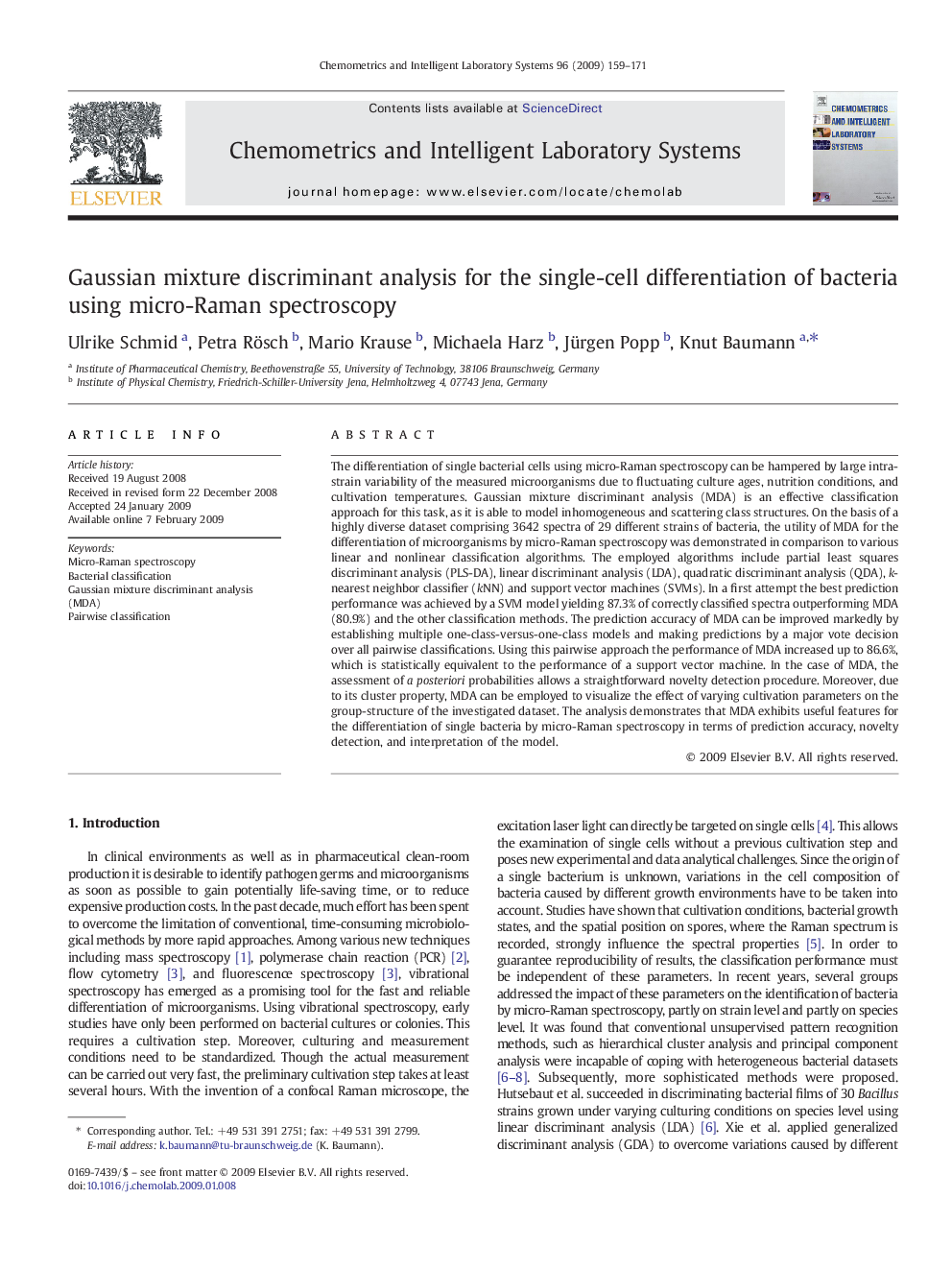| Article ID | Journal | Published Year | Pages | File Type |
|---|---|---|---|---|
| 1181175 | Chemometrics and Intelligent Laboratory Systems | 2009 | 13 Pages |
The differentiation of single bacterial cells using micro-Raman spectroscopy can be hampered by large intra-strain variability of the measured microorganisms due to fluctuating culture ages, nutrition conditions, and cultivation temperatures. Gaussian mixture discriminant analysis (MDA) is an effective classification approach for this task, as it is able to model inhomogeneous and scattering class structures. On the basis of a highly diverse dataset comprising 3642 spectra of 29 different strains of bacteria, the utility of MDA for the differentiation of microorganisms by micro-Raman spectroscopy was demonstrated in comparison to various linear and nonlinear classification algorithms. The employed algorithms include partial least squares discriminant analysis (PLS-DA), linear discriminant analysis (LDA), quadratic discriminant analysis (QDA), k-nearest neighbor classifier (kNN) and support vector machines (SVMs). In a first attempt the best prediction performance was achieved by a SVM model yielding 87.3% of correctly classified spectra outperforming MDA (80.9%) and the other classification methods. The prediction accuracy of MDA can be improved markedly by establishing multiple one-class-versus-one-class models and making predictions by a major vote decision over all pairwise classifications. Using this pairwise approach the performance of MDA increased up to 86.6%, which is statistically equivalent to the performance of a support vector machine. In the case of MDA, the assessment of a posteriori probabilities allows a straightforward novelty detection procedure. Moreover, due to its cluster property, MDA can be employed to visualize the effect of varying cultivation parameters on the group-structure of the investigated dataset. The analysis demonstrates that MDA exhibits useful features for the differentiation of single bacteria by micro-Raman spectroscopy in terms of prediction accuracy, novelty detection, and interpretation of the model.
